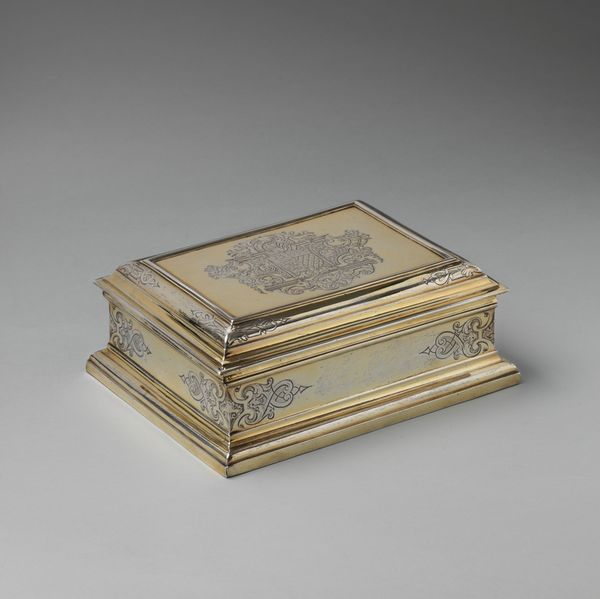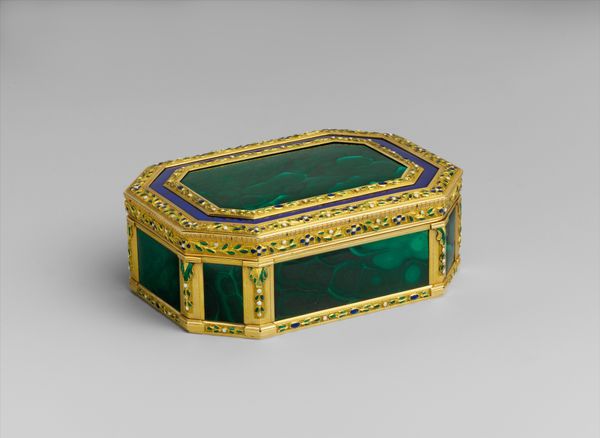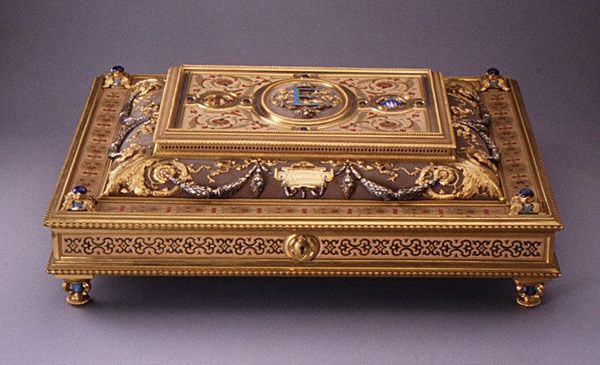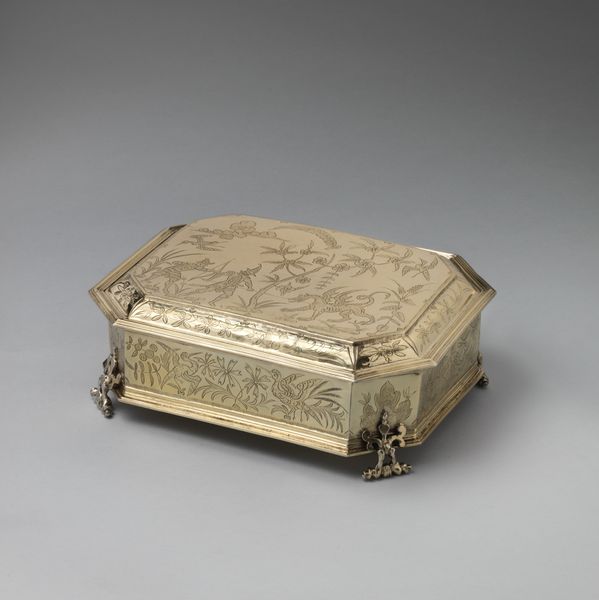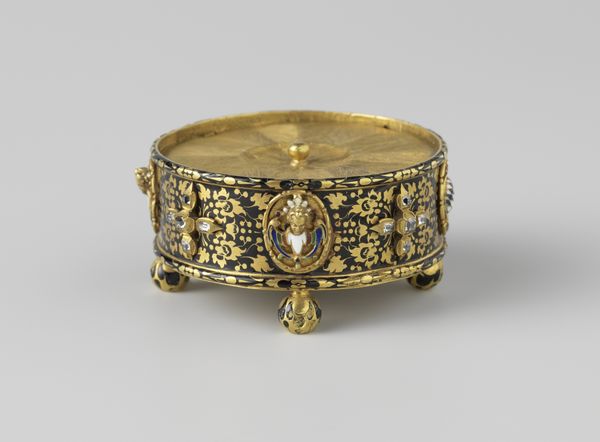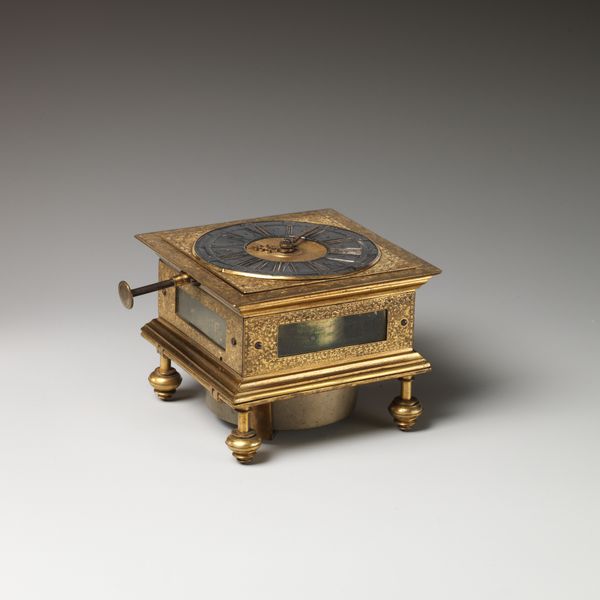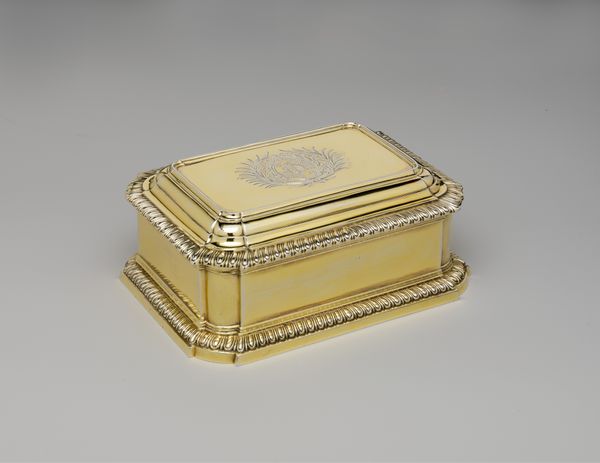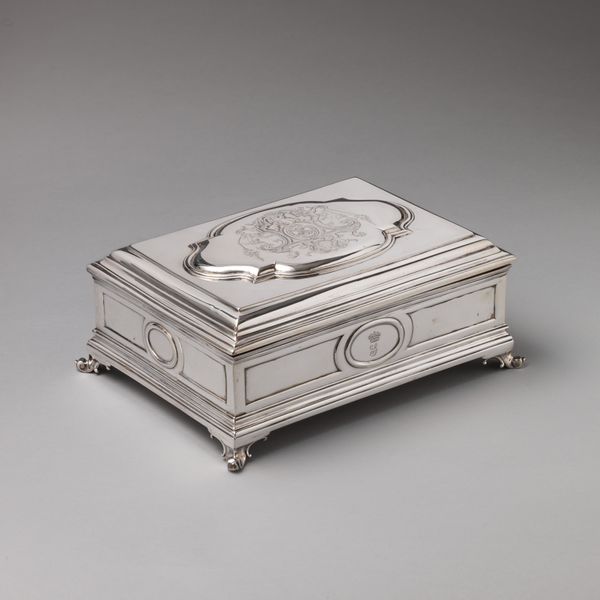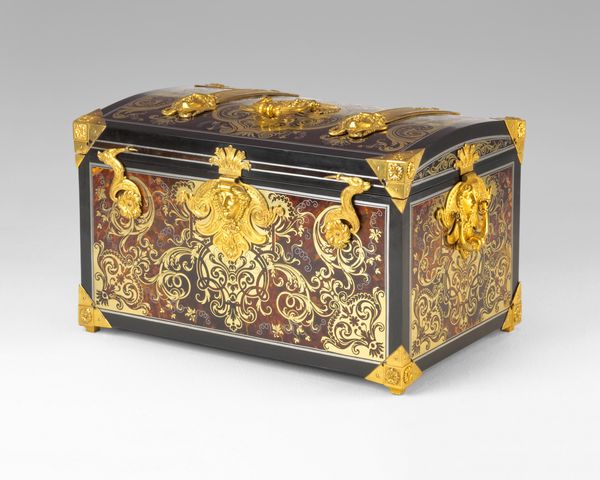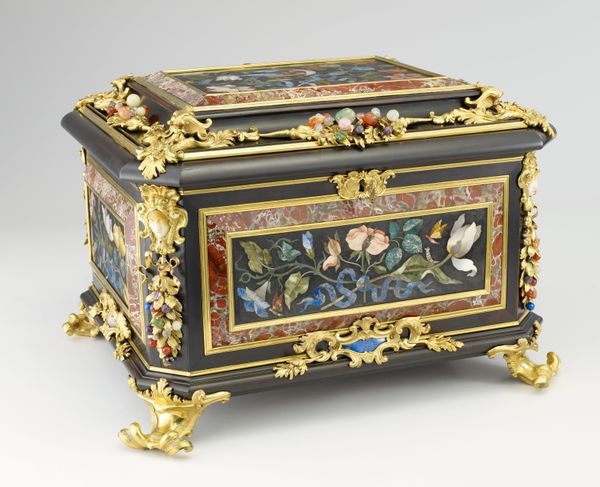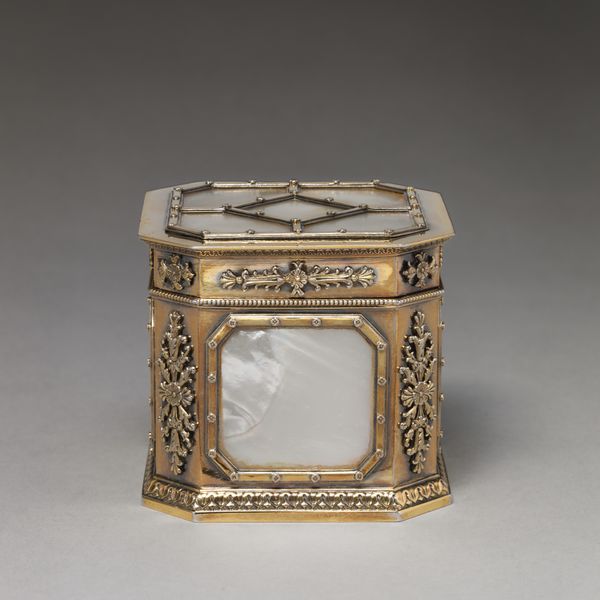
metal, sculpture, wood
#
byzantine-art
#
metal
#
geometric
#
sculpture
#
wood
#
decorative-art
#
rococo
Dimensions: Overall (confirmed): 4 3/4 × 14 3/4 × 9 1/2 in. (12.1 × 37.5 × 24.1 cm)
Copyright: Public Domain
Curator: This stunning "Inkstand" was crafted sometime between 1765 and 1775, and is attributed to Philippe Claude Montigny. Editor: My first thought is one of opulence; the sharp contrast of black against the golden hue definitely strikes me as excessive. It is rather captivating. Curator: Well, its placement is telling. Back then, only the elite would have such an extravagant piece sitting on their desks! Montigny designed the stand during a period of decorative flourish; observe the geometric design which feels classically inspired, juxtaposed with flourishes indicative of the Rococo style. It really epitomizes wealth and status in pre-revolutionary France. Editor: Absolutely. It's more than just a practical object. I’d argue that something like this almost dictated who had access to literacy, scholarship and all the power which it represented. Curator: Interesting point. How the design features interact with such a power structure is fascinating, for instance, the lion's paw feet, the neoclassical key pattern and of course, its lavish materiality of precious metals and exotic woods, it speaks volumes about imperial aspirations! It highlights that era's appropriation of imagery linked with classical prestige, as a tool to establish itself within cultural, political, and societal canons. Editor: Definitely. Consider its implications. By laying claim to a cultural legacy, the elite was, in fact, perpetuating dominance—intellectually, creatively, economically. Looking at this now, I feel conflicted between appreciating its craftsmanship and recoiling from its message. Curator: Indeed. Objects such as these make us think about how such display and construction of luxury reinforces power relations. Editor: Yes, examining how objects like this shaped social relations challenges the way we perceive art. It compels us to see beyond the purely aesthetic. Curator: And recognize how historical artworks impact contemporary dynamics. Editor: A potent reminder of art's place in wider discourse.
Comments
No comments
Be the first to comment and join the conversation on the ultimate creative platform.
